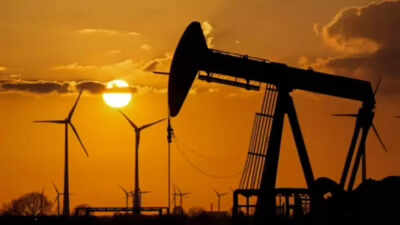OPEC+ giants ramp up additional oil to India; market share nears 78%; supplied 375,000 bpd to India in May

NEW DELHI: India’s top four oil suppliers and key members of the OPEC+ alliance, Saudi Arabia, Russia, Iraq, and the UAE have significantly ramped up production and directed a major portion of the additional output to India.Their collective market share has reached approximately 78% in India, the world’s third-largest oil consumer. These nations have supplied an additional 375,000 barrels per day (bpd) to India in May compared to April, according to energy cargo tracker Vortexa.The collective increase surpassed their committed additional production of 359,000 bpd under Opec+’s output expansion plan of 409,000 bpd.Russia maintained its leading position among India’s crude suppliers due to ongoing barrel discounts.In the OPEC+ May supply increase, Saudi Arabia agreed to raise output by 166,000 bpd, Russia by 79,000 bpd, Iraq by 37,000 bpd and the UAE by 77,000 bpd.Their exports to India increased by 135,673 bpd, 114,016 bpd, 66,642 bpd and 58,365 bpd respectively, resulting in market shares of 13.1%, 35.4%, 21.4% and 7.6% in May. Their combined share increased by 8.1 percentage points to 77.5%.African suppliers’ share decreased to 4.9% from 11.8%, whilst US crude exports to India reduced to 5.7% from 7%.Saudi Arabia, the largest contributor to the group’s supply increase, delivered the highest additional volume to India in May, increasing its market share to 13.1%, a 3% point rise from April.This increase resulted from price reductions offered to Asian purchasers, with Saudi Aramco reducing the May OSP for Arab Light by $2.30 per barrel.The premium has decreased to $1.20 above the Oman/Dubai benchmark for Asian buyers. For July loadings, the premium remains at $1.20, after a brief increase to $1.40 for June.“The recent Saudi Aramco’s official selling price (OSP) cuts for May loadings, close to four-year low, along with the widening Brent-Dubai Exchange of Futures for Swaps (EFS) made Middle Eastern crude grades more competitively priced than other Brent-linked crudes,” Xavier Tang, market analyst at Vortexa said, according to the Economic Times.“Production increases from Saudi Arabia and other OPEC members play an essential role in the Dubai crude price structure,” he added.Eight OPEC+ nations have committed to increase output by an additional 411,000 bpd in June and July. The increased supply has affected prices, which have remained between $60-65 per barrel for over two months, significantly below the 2024 average of $80.Saudi Arabia’s competitive pricing approach reflects the global competition for India’s expanding crude market. “Saudi is offering attractive prices to gain share in India,” an Indian refinery executive told the outlet.





